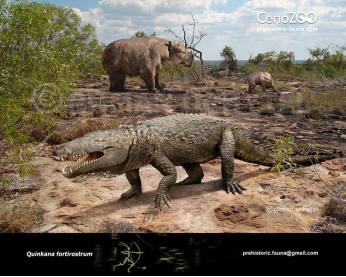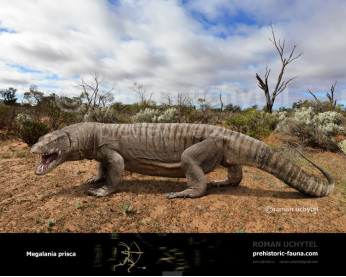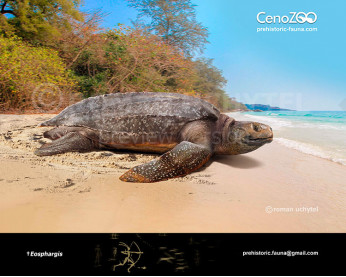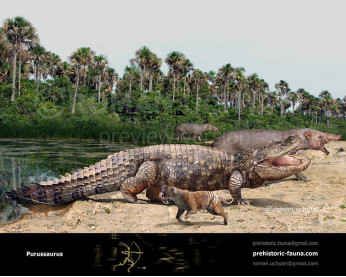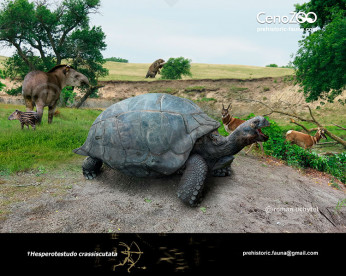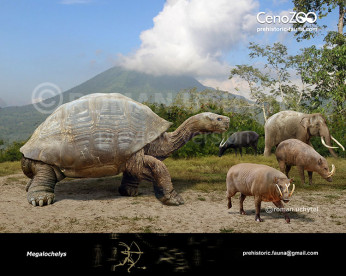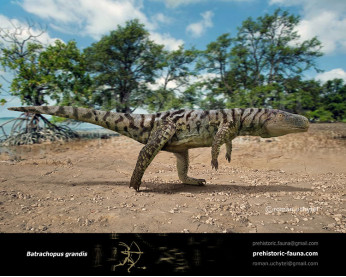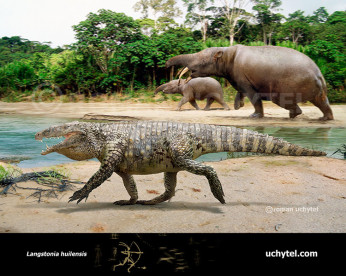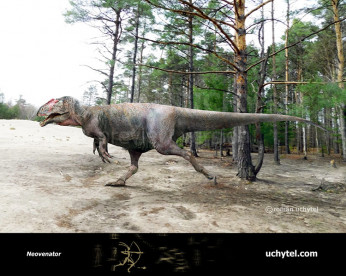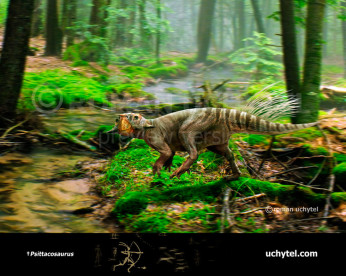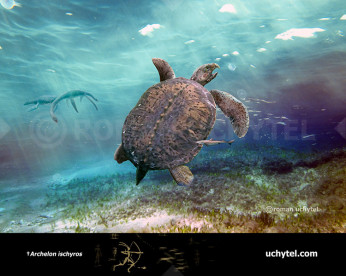Cryptoclidus
2029220292Cryptoclidus (†Cryptoclidus (Seeley, 1892))
Class: Reptilia
Superorder: †Sauropterygia
Order: †Plesiosauria
Suborder: Cryptodira
Family: †Cryptoclididae
Dimensions: up to 4 m length, weight - 600 -760 kg
Expansion: Middle Jurassic to Late Jurassic, 166–160 Ma
Cryptoclidus was a medium-sized plesiosaur, with the largest individuals measuring up to 4 m long and weighing about 737–756 kg.
The specimens include adult and juvenile skeletons, and remains which have been found in various degrees of preservation in England, Northern France, Russia, and South America. Its name, meaning "hidden clavicles", refer to its small, practically invisible clavicles buried in its front limb girdle.
The fragile build of the head and teeth preclude any grappling with prey, and suggest a diet of small, soft-bodied animals such as squid and shoaling fish. Cryptoclidus may have used its long, intermeshing teeth to strain small prey from the water, or perhaps sift through sediment for buried animals.
The size and shape of the nares and nasal openings have led Brown and Cruickshank (1994) to argue that they were used to sample seawater for smells and chemical traces.
Cryptoclidus (†Cryptoclidus (Seeley, 1892))
Class: Reptilia
Superorder: †Sauropterygia
Order: †Plesiosauria
Suborder: Cryptodira
Family: †Cryptoclididae
Dimensions: up to 4 m length, weight - 600 -760 kg
Expansion: Middle Jurassic to Late Jurassic, 166–160 Ma
Cryptoclidus was a medium-sized plesiosaur, with the largest individuals measuring up to 4 m long and weighing about 737–756 kg.
The specimens include adult and juvenile skeletons, and remains which have been found in various degrees of preservation in England, Northern France, Russia, and South America. Its name, meaning "hidden clavicles", refer to its small, practically invisible clavicles buried in its front limb girdle.
The fragile build of the head and teeth preclude any grappling with prey, and suggest a diet of small, soft-bodied animals such as squid and shoaling fish. Cryptoclidus may have used its long, intermeshing teeth to strain small prey from the water, or perhaps sift through sediment for buried animals.
The size and shape of the nares and nasal openings have led Brown and Cruickshank (1994) to argue that they were used to sample seawater for smells and chemical traces.


-797x638.jpg)

-70x56.jpg)
